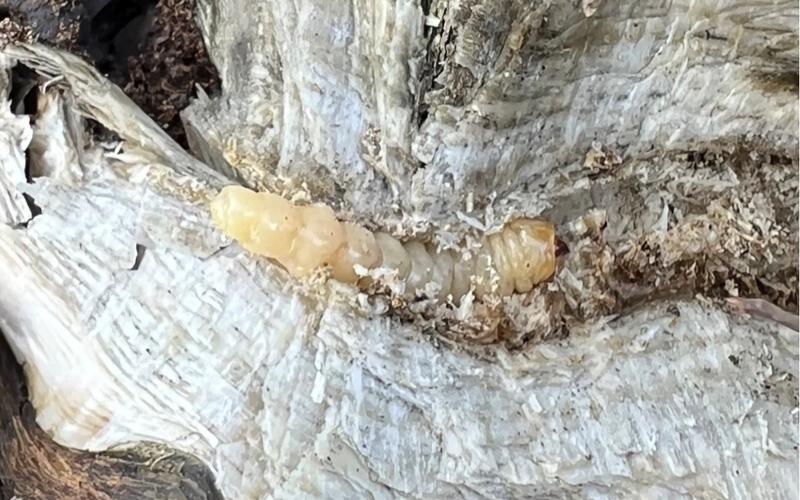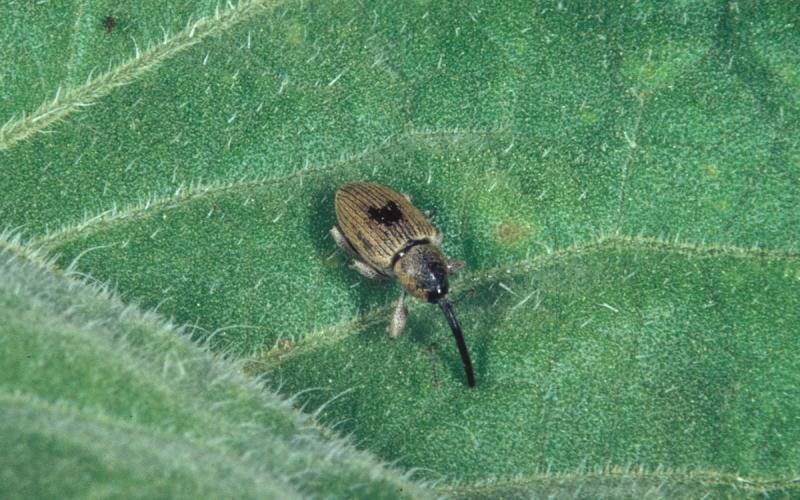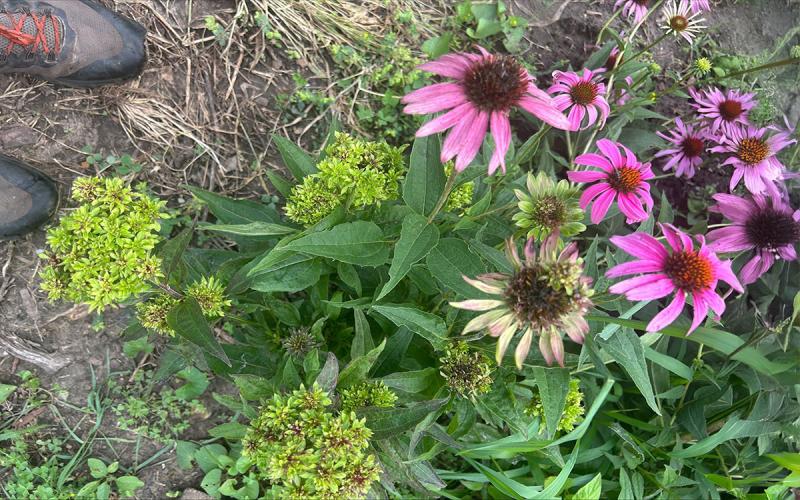Originally submitted: August 2, 2024
Sunflower moths have been observed in South Dakota sunflower fields this week. Sunflower heads are most susceptible to damage caused by the sunflower moth caterpillars from the onset of flowering (R5.1) to when the ray petals begin drying (R6). The sunflower moths are attracted to sunflower fields during the early stages of blooming and will deposit eggs near the base of florets. Each female sunflower moth has the potential to lay as many as 400 eggs. In other states where this insect is a more serious pest, populations of the caterpillars can range from 15 to 200 per head. In South Dakota, we generally will observe 1 to 5 sunflower moth caterpillars per head. However, the potential for larger populations occurring is possible, which is why scouting for the sunflower moth is important.
Identification
The adult sunflower moths are small, measuring approximately three-eighths of an inch in length with a wingspan of approximately three-quarters of an inch. The moths are tan to light-gray in color and are typically a cylindrical shape, as they tuck their wings tightly to their bodies when they are at rest (Figure 1). The sunflower moth caterpillars have very distinctive coloration, with a bright orange head with a black body (Figure 2). They have white stripes that run the length of their bodies. The caterpillars range in size, but reach approximately three-quarters of an inch during their final developmental stage.
Adult
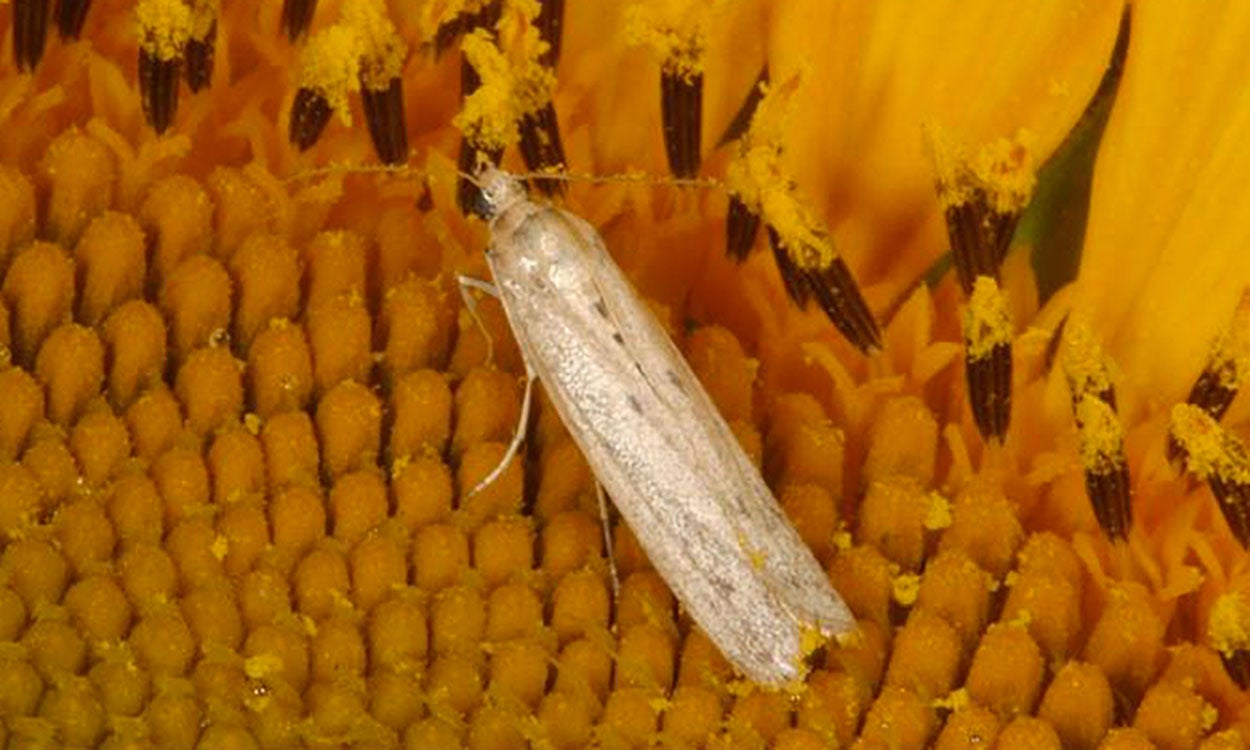
Caterpillar
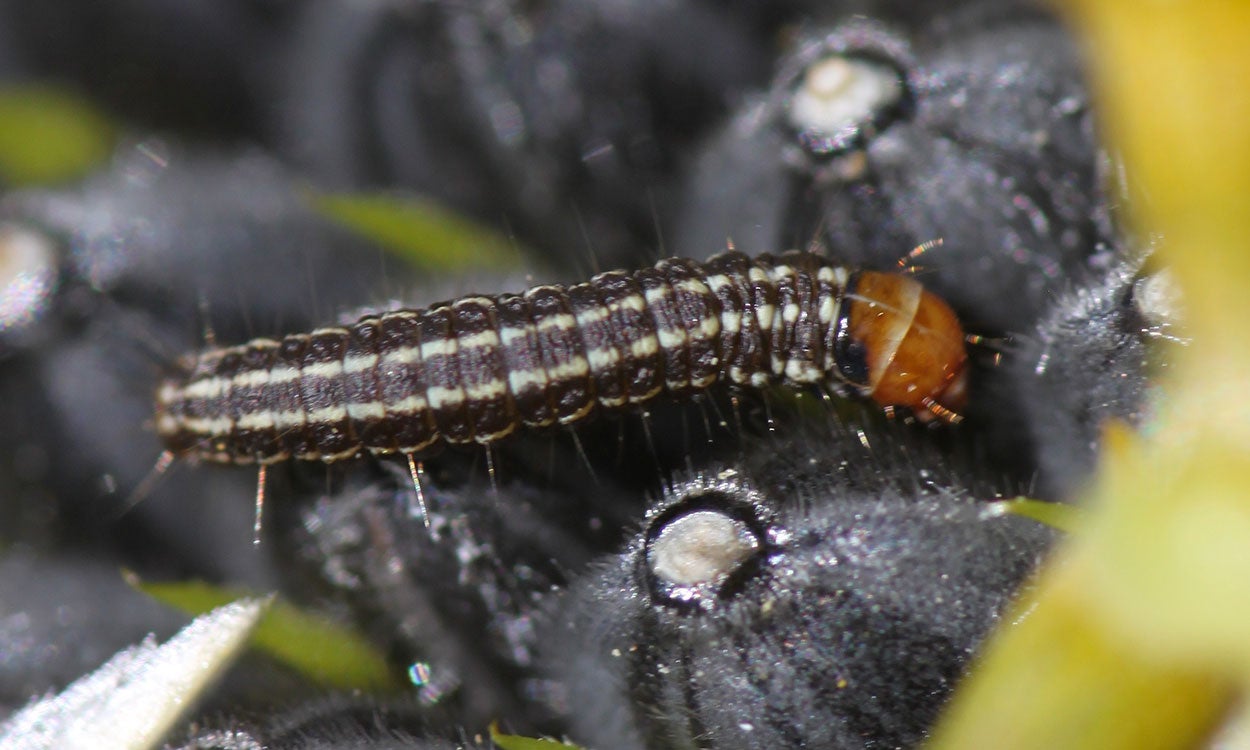
Scouting and Management
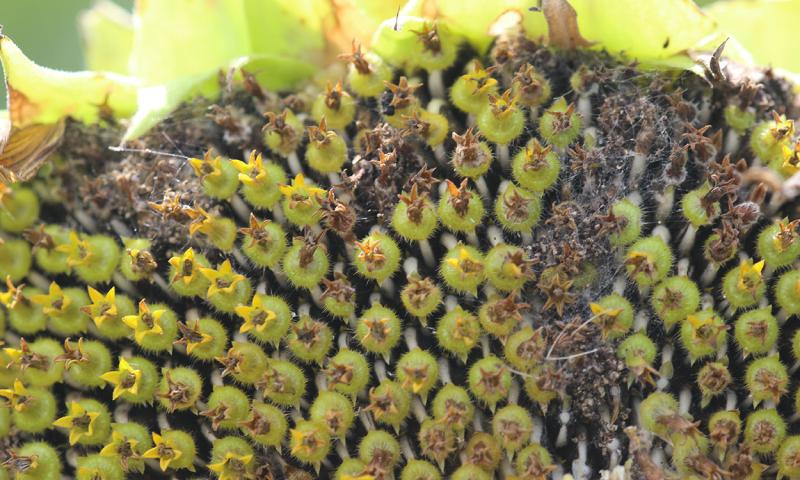
Sunflower moths do not overwinter in South Dakota and must migrate each year from southern states. Each summer, they arrive in South Dakota when sunflowers begin flowering. The moths can be observed on sunflower heads during early flowering stages. During the first two instars, the caterpillars of the sunflower moth will feed on pollen, but they will transition to feeding on the seed during their later developmental stages. The caterpillars will also tunnel into the sunflower head tissue. This tunneling can lead to secondary infections of Rhizopus head rot. These secondary infections are the main source of yield loss associated with this pest. A single caterpillar may feed on 3 to 12 seeds within a head. Additionally, the caterpillars of the sunflower moth spin silken threads that will bind dying florets and other materials to the head, which will give the head a trashy appearance (Figure 3).
Scouting for the sunflower moth should begin at the R4 growth stage. The best way to scout for sunflower moths is to use a flashlight and examine fields approximately one hour after sunset, which is when moth activity peaks. Count the number of moths on the heads of 20 sunflowers from five random locations throughout the field. The threshold for sunflower moth is 1 to 2 moths per five sunflower heads.
For insecticide options, see the latest South Dakota Pest Management Guide for Alfalfa and Oilseeds.
